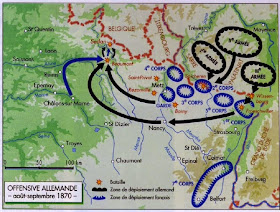- The Tao of the Traditional Family
- Is War on the Muslim Brotherhood a Policy of the US?
- The Russian Army's Secret Weapon
- F-35 Clean Sweep
- China, the US, and Strategic Planning
Early in his pontificate the Pope said Catholics must not be trapped into "obsessing about homosexuality, contraception and abortion," He said there are more fundamental truths that must be emphasized and these "issues" would fall in place in some larger, more understandable context. The Conference of worldwide religious leaders on the Complementarity of Male and Female held in Rome from November 17th-19th was a beautiful and bracing illustration of the Pope's approach. The series of interesting and different speakers is supplemented by a link to the stunning video presentation produced by organizers of the conference. This cosmological and anthropological approach to masculinity and femininity is exactly the widening of the playing field needed for Catholic thinkers to enter all these debates on our own terms. The talks are excellent - from the Pope to Rabbi Sacks to N.T. Wright to Peter Kreeft and Fr Barron. The approach is the most fundamental lesson. The narrowing issue approach has given way to the Church explaining the larger reality from which our position on issues is derived.
The United Arab Emirates and Saudi Arabia see the Muslim Brotherhood as grave threats, not because of any extremism within the Brotherhood, but because it is a threat to their current political system. As the United States helps fight the Islamic State, it is important we weigh our relationships with Sunni Arab states like Saudi Arabia and the UAE and not allow ourselves to be drawn into the fear of the royal autocracies for democratic Muslim movements.
Advances in military technology often have broader geopolitical impact. The Russians, for example, completed a project the US has been unable to accomplish in updating its armored vehicles. The Armata program has given the Russian military a new platform from which to build battle tanks and armored infantry carriers. New focus has been placed on crew protection and better protection for arctic conditions - signs that Russia is investing in its tank crews and in protecting strategic resources in the far north. While Russia is looking at advancing its ground forces, the United States has advanced its air and sea power through the successful testing of the new F-35 at sea. The F-35, modified for use by the Army, Navy, Air Force, and Marines, is a "fifth generation" aircraft that will help maintain air and sea dominance in the decades ahead. It is also a large part of America's "Asian pivot" to counter rising China. Given this, along with vocal US strategists speaking on war with China, China may be less inclined to cooperate with the United States regarding military matters and is indeed making strategic plans of its own. The outcome is not as certain as this writer would put it. However it seems like a deeper Russian-Chinese partnership is more and more likely.




.jpg)










